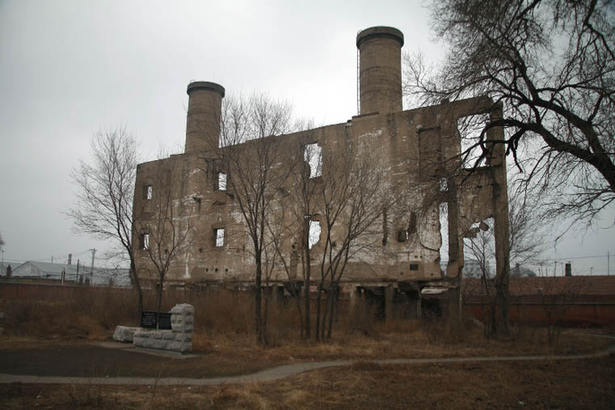Gruesome Crimes of Japan’s Unit 731
By BU PING
Since the unveiling of new evidence of biological experiments on humans conducted by the Japanese army in China in the first half of the last century, the brutality of Imperial Japan and its militarism have been universally denounced.
|
 |
| Boiler plant used by Unit 731. |
The testing of chemical and biological weapons on live humans by Unit 731 of the Imperial Japanese Army during World War II is among the most savage acts in human history. A post-war investigation conducted by the United States showed that, in 1943 alone, over 800 people fell victim to Unit 731’s tests. By 1945, the number was around 1,000. According to confessions of Japanese war criminals at a trial in the former Soviet Union’s Khabarovsk in December 1949, at least 3,000 experiments were conducted on humans at Unit 731.
However, due to its own interests, the United States did not pursue Japan’s liabilities for its chemical and biological warfare. Thus, the inhumanities of the Japanese army are seldom publicly discussed. Only a few of details about what Unit 731 did were mentioned and made public during the Khabarovsk trial, such as how the Japanese army used large numbers of living humans as experimental specimens.
One Unit 731 army officer confessed that, on January 26, 1938, the headquarters of the Japanese Kwantung Army, stationed in northeast China, ordered its troops to deliver recently arrested individuals directly to the military police in Harbin, capital of China’s Heilongjiang Province, without any legal procedures. The order specified a “special transfer,” a euphemism used by the Kwantung Military Police. Ordinary officers did not even know what the real purpose of such activities were. Saito Yoshio, then chief of the police section of the Japanese Kwantung Army, confessed after the war that “special transfer” referred to sending prisoners to Unit 731.
However, since only incomplete testimonies from the Khabarovsk trial were made accessible, most details about the Japanese army’s biological and chemical warfare tests on humans remained unknown. Japanese right-wing forces hence deny they took place. Finding documents about “special transfers” was therefore vital as evidence of the Japanese army’s gruesome atrocities.
In 1999, the Heilongjiang Provincial Archives uncovered documents that recorded a “special transfer” involving 52 anti-Japanese intelligence agents, of whom 42 were sent to the Kwantung Military Police in Harbin. On the basis of this evidence, the Jilin Provincial Archives conducted extensive research into documents on the Kwantung Military Police. It found about 200 files that refer to the “special transfer” of 277 people, of whom 227 were recorded as already transferred, including Chinese, Korean, Mongolian and Soviet citizens.

